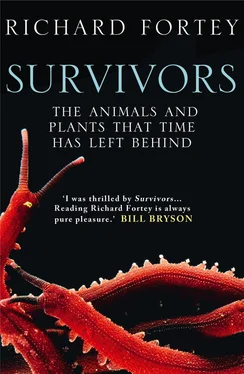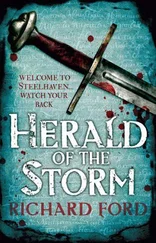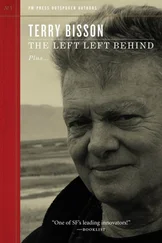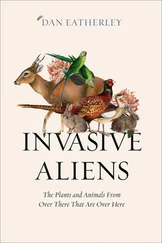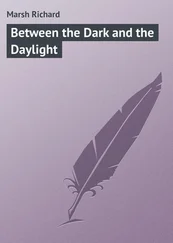My visit to Mistaken Point convinced me that it was possible for whole groups of organisms to disappear from the biosphere. There are some scientists who claim that the organisms preserved there – they have been called Vendobionta, among other things – are a kingdom (like Animalia) that has become extinct; a kingdom of ‘quilted’ animals that many of the same scientists also think may have harboured bacteria in their body compartments in some kind of symbiosis. The somewhat younger fossils from the Ediacara Hills in Australia also include a variety of ‘quilted’ organisms, but some of these seem to show a clear front end – a head. One of these, a creature called Spriggina, has been quoted as a kind of soft-bodied trilobite precursor. The more I look at Spriggina, the more I doubt it. The numerous ‘segments’ seem to be out of step on either side of the animal, and the head end looks like a boomerang and not really like the forerunner of a head-shield. In fact, when you examine it impartially it looks more like another apparently quilted and very un-trilobitic animal called Dickinsonia. But there is no question Spriggina is an intriguing animal, and I would love to be proved wrong. An Australian school of palaeontologists identifies soft-bodied ancestors of a few, living types of animals among a group of strange Ediacarans that are not quilted. An odd, radially symmetrical creature called Arkarua is claimed as an ancestral echinoderm, for example; a thing that looks something like a snowshoe called Kimberella has been claimed as a mollusc. Every one of these animals courts controversy. But at least some of these Australian Ediacaran animals, including Kimberella, are symmetrical about a line running along their midriff. This may not seem much, but it does show that below the Cambrian there were animals that could be placed in Bilateria – that is, animals with left and right sides that are mirror images (or bilaterally symmetrical). The common ancestor of arthropods, molluscs, annelid worms, and flatworms, not to mention the ancient relatives of velvet worms, would have been bilaterally symmetrical. We shall return to the interesting questions of the early days of animal evolution.
Vendobionts (or call them what you will) seem to have colonised all the seas of the world before the Cambrian Period. They were the first large organisms, and the younger and more advanced ones were certainly animals. Explaining exactly what they were has taxed the ingenuity of many clever people; but they have in all likelihood vanished from the world (the organisms, I mean, rather than the clever people). Some of the quilted animals that lived in shallow water may, possibly, have housed symbiotic algae or bacteria in their tissues, and basked in the sunshine, like prostrate reef corals. On the other hand, the Mistaken Point fauna appear to have lived in too deep and too turbid an environment for this to be a plausible option. It is perhaps not surprising that such strange creatures have inspired strange explanations. One worker even claimed that the vendobionts were not animals at all, but lichens, the living symbiotic collaboration between fungus and ‘alga’ *that coats trees and rocks almost everywhere in the world. Lichens are the ultimate biological survivors in the simplest sense, because they seem to relish hardship and the tough life. However, none of them is adapted to life in the sea. The fact that some lichens have a flat and foliate form, as do the Precambrian ‘spindles’, indicates no more than a broadly similar way of growing over flat surfaces. Life’s history is as full of repetition as it is of endless inventiveness.
The waves surge and retreat from the stacked-up sea floors that once built Mistaken Point. This continually punished land will inevitably succumb to erosion, and the record of ancient life buried by chance so long ago beneath clouds of volcanic ash will be returned to the sea as a billion tiny particles. In the end, only the sea endures, it is the greatest survivor of them all. Even the continents mutate and remake themselves, driven by the internal engines of the earth powering slow but inexorable movements of tectonic plates. Mountain ranges are elevated and then reduced to rubble, but life can outlast mere Himalayas. Peripatus’ relatives once walked upon Gondwana when Africa was united with Australia and the Americas. The memory of
5. Pangaea – where the continents of the world were united as one ‘supercontinent’ 270 million years ago. The southern mass (South America, Africa, India, Antarctica, Australia) is Gondwana.
that vanished geography still lingers under rotting logs, or whispers through the leafy boughs of podocarp forests. Briefly, at least geologically speaking, all the continents were united together in the supercontinent called Pangaea (Greek: ‘all earth’) some 270 million years ago. But that mighty entity, too, was just a phase, just one configuration of the earth’s ever-changing physiognomy. For earlier still there was a time when continents were dispersed once more, making for a geography that looks still odder to our eyes. Science tries to reconstruct this former world map: it is like cutting a jigsaw puzzle into a set of new pieces, and then attempting to refit them into another picture altogether. By the Cambrian Period some 500 million years ago, these scattered continents were naked with their rocks unclothed by plants. The distant relatives of the velvet worm were there, though, living beneath the sea among a host of other creatures: some strange, some familiar. The lobopods were more diverse then than they have ever been since. *The branches of the tree of life were drawing closer to a relatively few common major limbs, but there was still a great variety of crawling, swimming, floating, burrowing creatures. There were livings to be earned: prey to hunt, hideaways to construct, plankton to be filtered, mates to be found. But then we must go back further, still further, into the Ediacaran. The surf at Mistaken Point washes over an even earlier, but alien world, a vanished world of soft-bodied, fractal things. There may have been no predation then, no burrowing, no grazing, no evidence of ‘nature red in tooth and claw’. It was a different biosphere, and its mysteries still elude us. And the fossils of Mistaken Point prove that not everything survived.
The search for the velvet worm leads to unsuspected places and puzzling worlds.
Shark Bay is a long way from anywhere. In Australia, distance soon acquires its own curious rules. Within the suburban strip that lines favoured parts of the coast there are traffic jams and shopping malls like anywhere else, but away from civilisation the outback country stretches onwards forever. Far from the mountainous east, much of the country is flat. No doubt connoisseurs of the horizontal find infinite entertainment in its small variations, but for me a bemused puzzlement sets in after a few hours apparently rehearsing the same piece of landscape numerous times. Time begins to stretch in odd ways. After a snooze, I wake up unsure whether I have been asleep for ten minutes or two hours. Small eucalypts line wandering creeks while sand dunes are covered with scrub, occasional scruffy fences mark obscure ownership, and there are groves of taller gums or isolated she-oaks stocked with the noisy parrots known as galahs. Then the sequence repeats, but not necessarily in the same order. The landscape is utterly distinctive, like that of nowhere else in the world, with a stark beauty under a clear pale blue sky, but it is also relentlessly repetitive. Anyone foolish enough to leave the marked track will find it is easy to get lost. Bush stories are full of sticky ends and grieving widows. I know that maps do not really work in a landscape that repeats like an old tune whistled over and over.
Читать дальше
